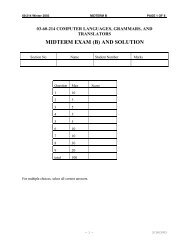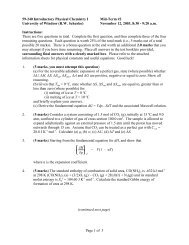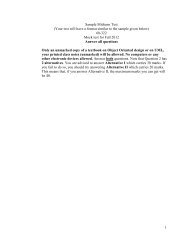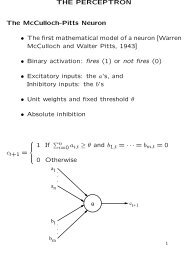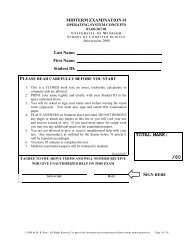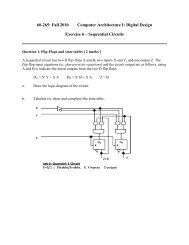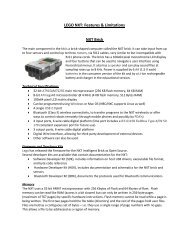Adjectives: A Uniform Semantic Approach - University of Windsor
Adjectives: A Uniform Semantic Approach - University of Windsor
Adjectives: A Uniform Semantic Approach - University of Windsor
Create successful ePaper yourself
Turn your PDF publications into a flip-book with our unique Google optimized e-Paper software.
<strong>Adjectives</strong>: A <strong>Uniform</strong> <strong>Semantic</strong> <strong>Approach</strong> 339<br />
This reflects the intuition that the sentence Jane is an attractive (blond woman)<br />
expresses a different proposition from that expressed by the sentence Jane is an<br />
attractive, blond woman. The latter reading would result in the inclusion <strong>of</strong> the<br />
element “w: woman” in the set Attractive.<br />
Finally, narrow-scope readings are computed differently. The narrow scopereading<br />
<strong>of</strong> an (attractive blond) woman is attributing “attractive-blond-ness” to the<br />
denotation <strong>of</strong> Jane. Such a reading is depicted in Fig 3.<br />
Fig. 3. Narrow-scope reading <strong>of</strong> Jane is an attractive blond woman<br />
Notice that the set Attractive-blond is <strong>of</strong> type “attractive-blond”. This results from<br />
applying the type formation rule <strong>of</strong> (11-c). The set representation <strong>of</strong> the narrow-scope<br />
reading is as follows:<br />
Attractive-blond = {w:T}: attractive-blond<br />
Woman = {w: woman}: woman<br />
Attractive-blond ∩ Woman = {w:attractive-blond:woman}:<br />
attractive-blond: woman<br />
Thus, a semantic interpreter will have two or more different syntactic trees as input,<br />
each <strong>of</strong> which is treated differently semantically.<br />
4 Consequences<br />
• This work emphasizes the semantic unity <strong>of</strong> the category called “adjective”,<br />
contrary to [16]. In this regards, this work agrees with [8]. However, it does so<br />
without “stretching” the ontology to contain events/states, as [8] does.<br />
Furthermore, using typed sets, we were able to account for the semantics <strong>of</strong><br />
phrases with multiple adjectives.<br />
• This approach is compositional. It is true, at least in the case <strong>of</strong> adjectives in<br />
English, that adjectives can syntactically appear exclusively predicative (e.g.<br />
‘asleep’), exclusively attributive (e.g. ‘veteran’), or in on both positions (e.g.<br />
‘good’), but there is always a single semantic rule that computes the respective<br />
meaning <strong>of</strong> the adjective noun-combination, namely the intersection <strong>of</strong> the<br />
denotation <strong>of</strong> adjective(s) and the head noun.<br />
• This approach is easily applied in a natural language processing system. This is<br />
because it is based on a well-defined mathematical system, i.e. set theory.







